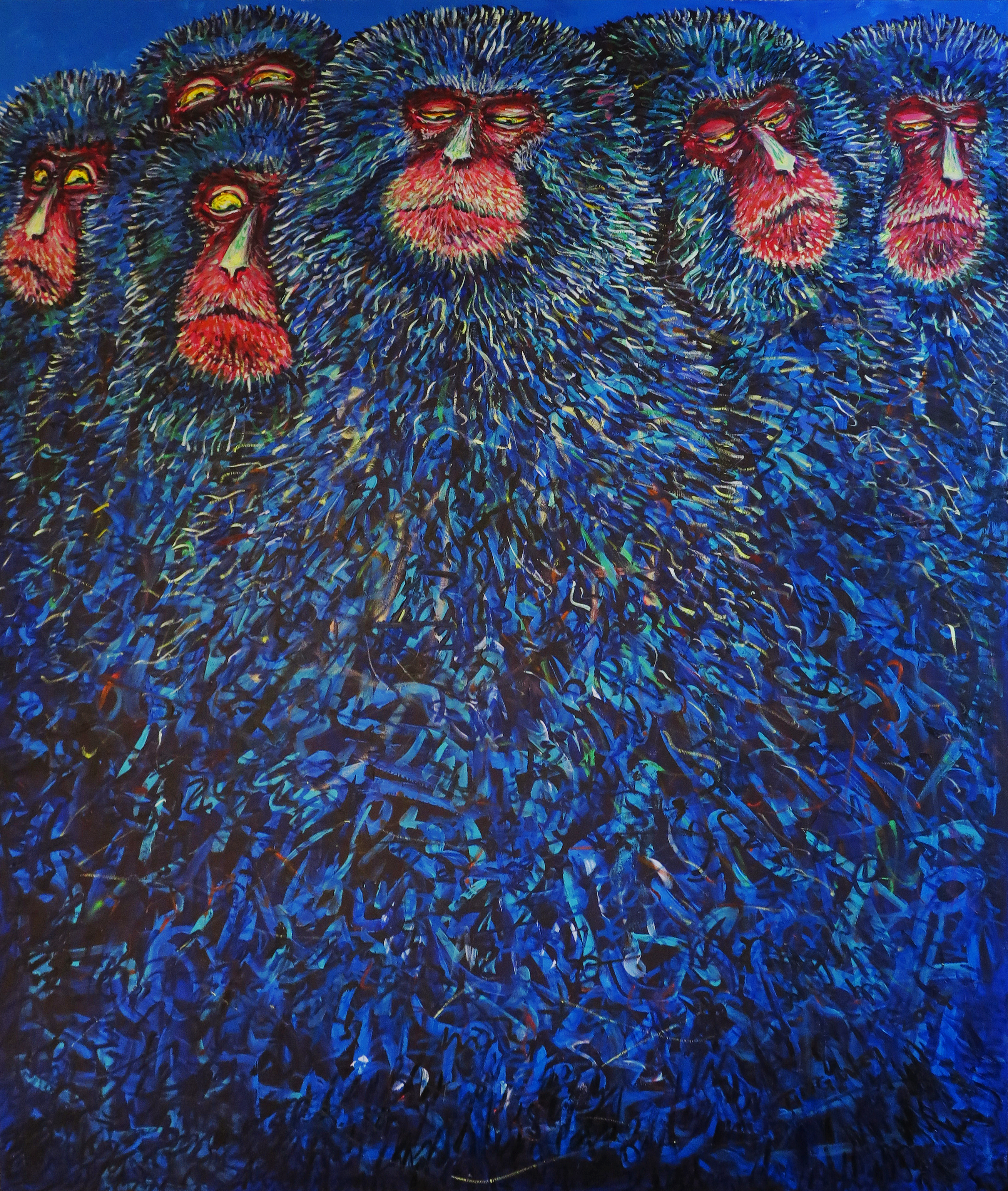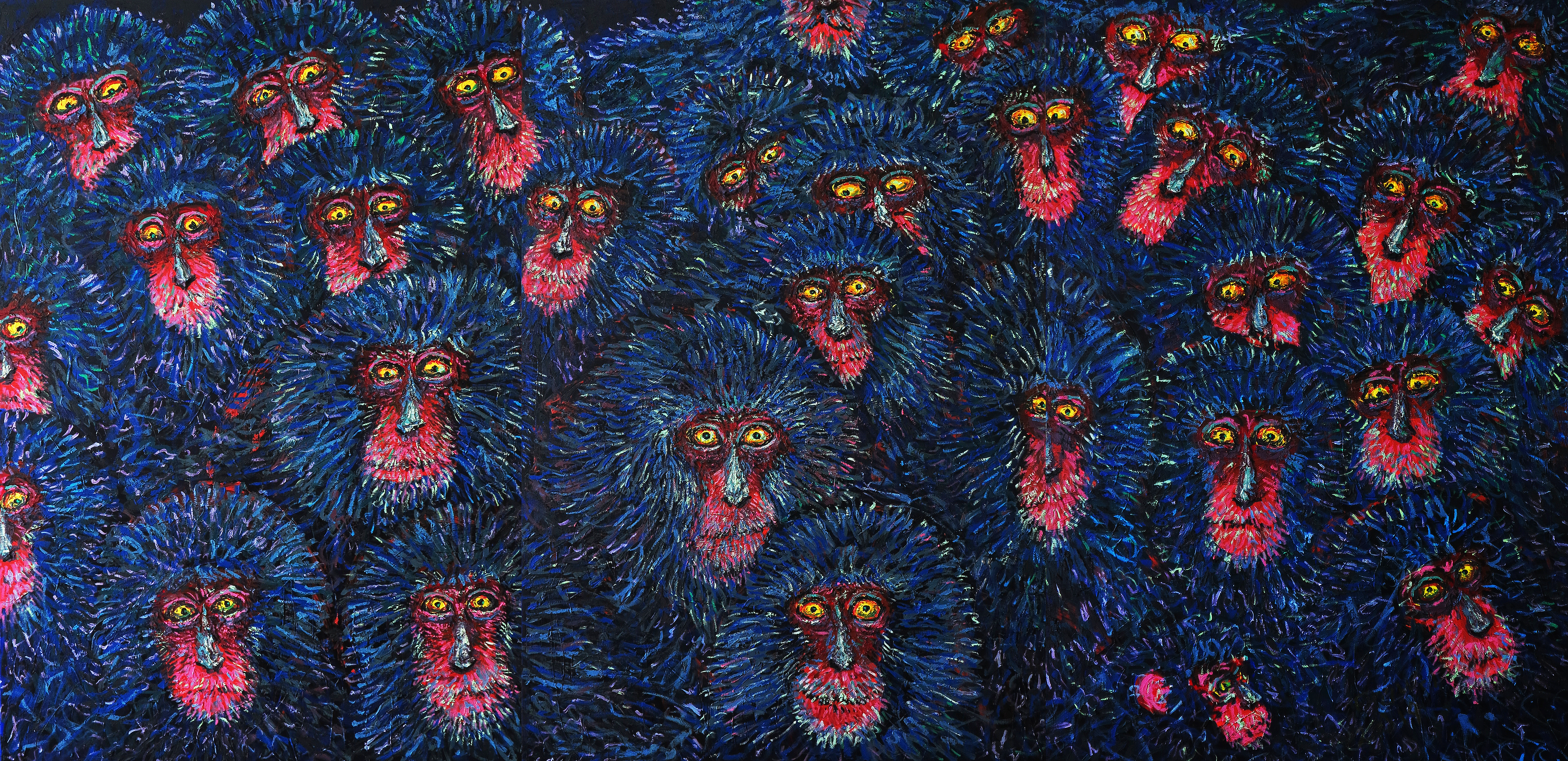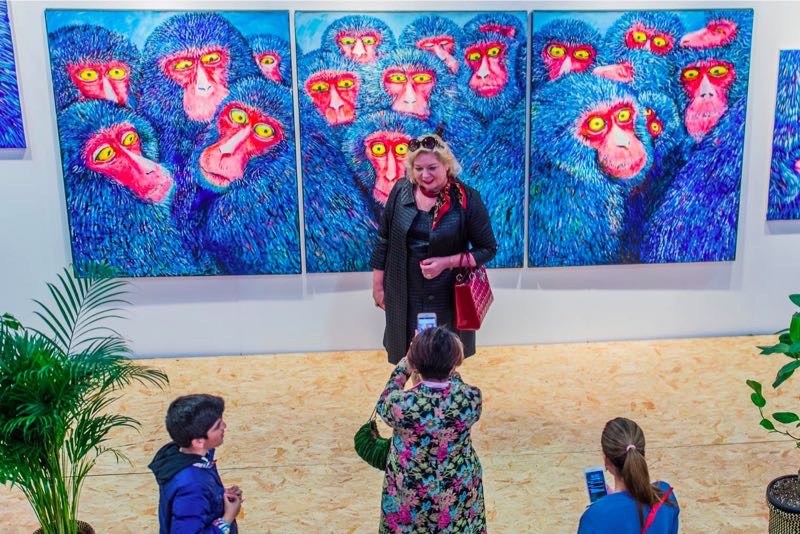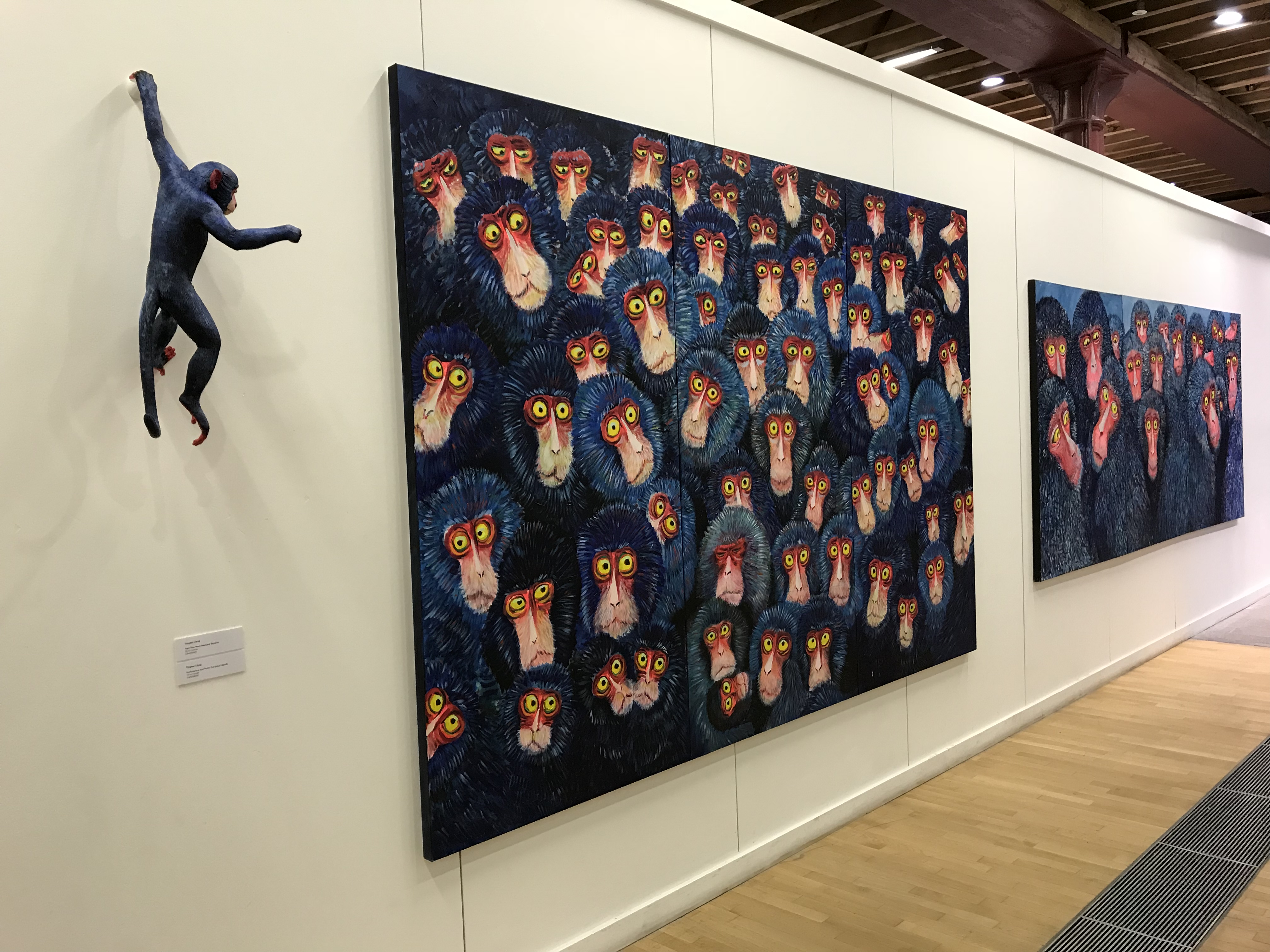
Features
Wei Liang: Monkey Business in Our Post-Modern Jungle
Wei Liang's artistic creations exist as a multi-angled examination of humanity. His concepts are built around the relationship between the origins of life, socio-political science and human religion. Extracting the pieces of material information from cult
By Rei Yukon
Wei Liang chooses baboons as his main subject matter to
access his critique of society, because apes are our closest genetic relative,
according to Darwinian theories, with the intelligence and ability to
understand the complex moral systems we humans have so engrained into our
culture. Apes are our closest genetic relative, according to Darwinian
theories, with the intelligence and ability to understand the complex moral
systems we humans have so engrained into our culture

Pride and Prejudice [傲慢与偏见]
It is often proffered that apes are our closest genetic counterparts, intelligent and emotionally intuitive. In this work, Weiliang's baboons leer down in a manner that suggests arrogance and distain, while the title of the artwork itself a comical reference to Jane Austen's Pride and Prejudice. In Weiliang's signature style of impastoed strokes and his brilliant colour choice of cobalt blue monkeys, the artist paints a satirical picture where the self-righteousness and arrogance of man is akin to the arguably jocular behavior of apes. The result is not only a visually stunning work of art, but also a subtle jab at the idea of elitism and exclusivity.

Chaos [乱]
In this work the artist offers us a more up close and personal encounter with his baboons. Pressed up against one another on the surface of the elongated canvas, the two monkeys at the end of the canvas have their gazes transfixed on the one in the centre, the latter then in turn staring intently into the viewer's line of sight. Their evocative expressions depict a sense of wariness and suspicion, where they are acutely aware of each other's presence, as well as the voyeurship of the audience. The artist perhaps makes a reference to the Buddist myth of the Three Wise Monkeys "See no Evil, Speak no Evil, Hear no evil" in both head count and subject matter of his work, creating an image with the intent of poking a subtle jab at our modernised society; where our interconnectedness means nothing is truely a secret, and rumours, false claims and gossip make it difficult to truely be trusting of the people around us.

Tiger!Tiger!Tiger![虎!虎!虎!]
Weiliang's Babooons are stark, brilliant and enigmatic, showcasing a litany of emotional expressions as they populate the canvas. Their facial expressions are highly evocative and lively, complementing the wild colour choice and expressive impasto work of the artist. His baboons are pressed up against one another, packed close and tight, some looking at each other, hyperaware of each other’s presence and motivations. They carry a sense of enigmatic unease, perhaps one that may seem exaggerated and comical. The Baboons are untrusting, cynical and wary because they live in fear of one another, and now struggle with the sheer amount of pressure that comes from living within such ‘close proximity’ of one another, both literally and metaphorically. The creatures mirror our modern day situations of social anxieties due to the excessive amount of information and falsehoods being spread in the media. The use of colour is a notable feature in the his work as well. With cool blue shades against the harshness of their red faces and golden eyes, these intuitive and intelligent creatures help the artist create a painting arguably filled with dynamic zest and a striking, alluring quality.

Invisible Cage [看不见的牢笼 ]
Weiliang's Babooons are stark, brilliant and enigmatic, their facial expressions highly evocative and lively, complementing the wild colour choice and expressive impasto work of the artist. Weiliang's repeated motif of apes is a conceptual aesthetic, the sheer number of them meant to mirror the interconnectedness of our populous and ever-growing society. His apes are a symbol of humanity, where here they are packed close and tight, both literally and metaphorically forced to be aware of each other and the impact they have on each other existence. Weiliang uses this black humor to comment on the information overload that technology and social media causes in today's globalised environment. The use of colour is a notable feature in the his work. With cool blue shades against the harshness of their red faces and golden eyes, these intuitive and intelligent creatures help the artist create a painting arguably filled with dynamic zest and a striking, alluring quality.



Pride and Prejudice [傲慢与偏见]
It is often proffered that apes are our closest genetic counterparts, intelligent and emotionally intuitive. In this work, Weiliang's baboons leer down in a manner that suggests arrogance and distain, while the title of the artwork itself a comical reference to Jane Austen's Pride and Prejudice. In Weiliang's signature style of impastoed strokes and his brilliant colour choice of cobalt blue monkeys, the artist paints a satirical picture where the self-righteousness and arrogance of man is akin to the arguably jocular behavior of apes. The result is not only a visually stunning work of art, but also a subtle jab at the idea of elitism and exclusivity.

Chaos [乱]
In this work the artist offers us a more up close and personal encounter with his baboons. Pressed up against one another on the surface of the elongated canvas, the two monkeys at the end of the canvas have their gazes transfixed on the one in the centre, the latter then in turn staring intently into the viewer's line of sight. Their evocative expressions depict a sense of wariness and suspicion, where they are acutely aware of each other's presence, as well as the voyeurship of the audience. The artist perhaps makes a reference to the Buddist myth of the Three Wise Monkeys "See no Evil, Speak no Evil, Hear no evil" in both head count and subject matter of his work, creating an image with the intent of poking a subtle jab at our modernised society; where our interconnectedness means nothing is truely a secret, and rumours, false claims and gossip make it difficult to truely be trusting of the people around us.

Tiger!Tiger!Tiger![虎!虎!虎!]
Weiliang's Babooons are stark, brilliant and enigmatic, showcasing a litany of emotional expressions as they populate the canvas. Their facial expressions are highly evocative and lively, complementing the wild colour choice and expressive impasto work of the artist. His baboons are pressed up against one another, packed close and tight, some looking at each other, hyperaware of each other’s presence and motivations. They carry a sense of enigmatic unease, perhaps one that may seem exaggerated and comical. The Baboons are untrusting, cynical and wary because they live in fear of one another, and now struggle with the sheer amount of pressure that comes from living within such ‘close proximity’ of one another, both literally and metaphorically. The creatures mirror our modern day situations of social anxieties due to the excessive amount of information and falsehoods being spread in the media. The use of colour is a notable feature in the his work as well. With cool blue shades against the harshness of their red faces and golden eyes, these intuitive and intelligent creatures help the artist create a painting arguably filled with dynamic zest and a striking, alluring quality.

Invisible Cage [看不见的牢笼 ]
Weiliang's Babooons are stark, brilliant and enigmatic, their facial expressions highly evocative and lively, complementing the wild colour choice and expressive impasto work of the artist. Weiliang's repeated motif of apes is a conceptual aesthetic, the sheer number of them meant to mirror the interconnectedness of our populous and ever-growing society. His apes are a symbol of humanity, where here they are packed close and tight, both literally and metaphorically forced to be aware of each other and the impact they have on each other existence. Weiliang uses this black humor to comment on the information overload that technology and social media causes in today's globalised environment. The use of colour is a notable feature in the his work. With cool blue shades against the harshness of their red faces and golden eyes, these intuitive and intelligent creatures help the artist create a painting arguably filled with dynamic zest and a striking, alluring quality.




